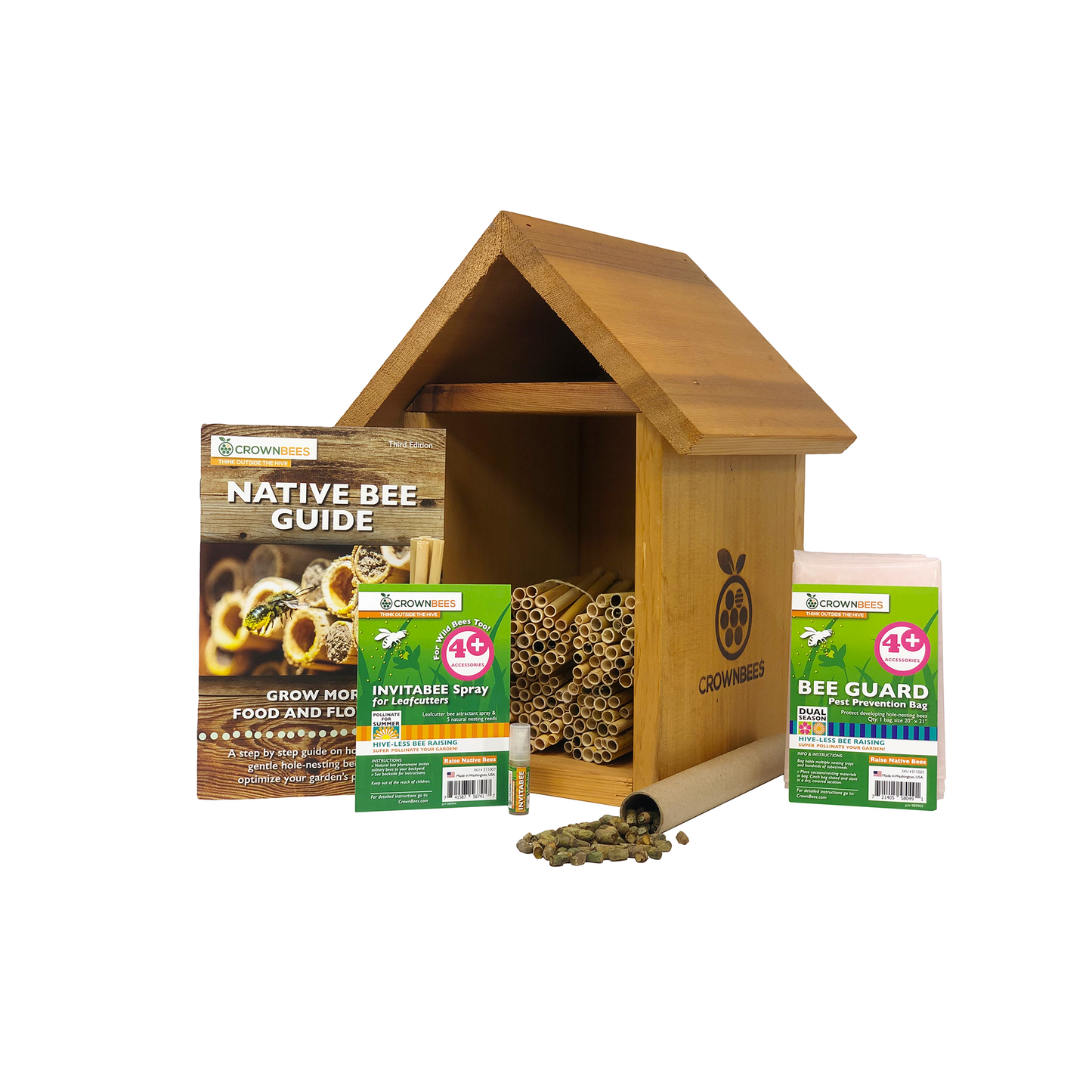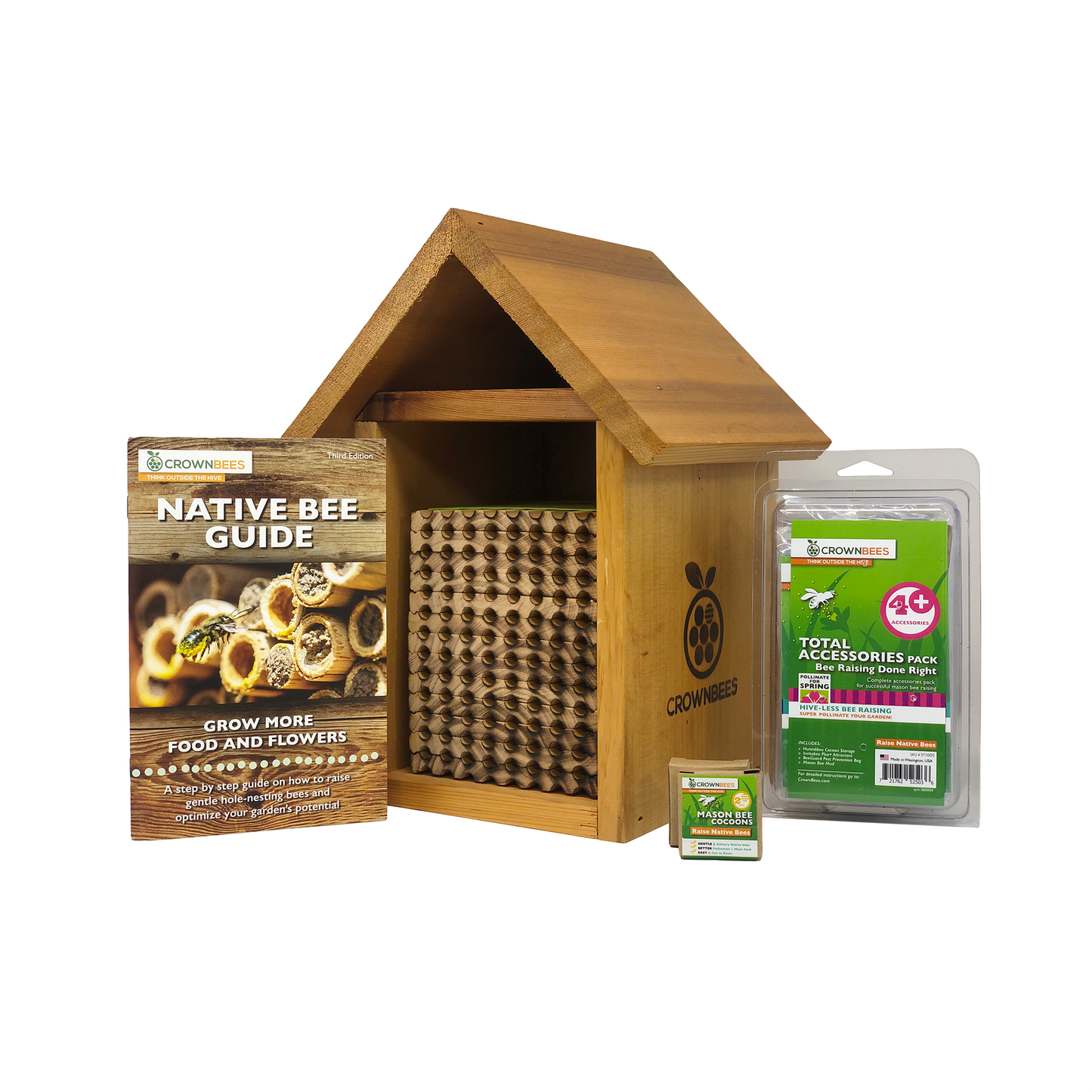
Pacific Bonsai Museum inspires a closer look at nature through the living art of bonsai, and inspires us to cultivate a more intentional relationship with nature. Their thought-provoking exhibitions embrace innovation and tradition, engage a diverse community and serve as a living repository of cultural heritage.
They are one of only two museums in the U.S. solely dedicated to bonsai, and one of only a handful of bonsai museums worldwide. Pacific Bonsai Museum maintains a collection of 150 bonsai that are among the finest examples of bonsai anywhere in the world, and the most geographically diverse bonsai collection in the U.S. A grand outdoor setting with the elegance of a fine art museum, Pacific Bonsai Museum features sixty trees on exhibit at a given time.
Step closer. Bring the kids.
Don't worry, these gentle solitary bees don't have a queen or honey to protect, so they have no reason to sting.
You are likely familiar with Honey bees and Bumblebees, but did you know there are over 20,000 known bee species in the world—4,000 in the U.S.? Ninety percent are solitary bees who prefer an independent lifestyle, rather than being part of a hive.
Some solitary bees live in the ground, but others build their nests inside tunnels left behind by insects, in the hollow stems of certain plants, and in bee houses like this one.
Why Are Solitary Bees Important?
They're Super Pollinators—Many solitary bees belly flop onto flowers and get pollen all over their bodies. They pollinate 95% of the flowers they visit, whereas Honeybees generally pollinate about 5% of the flowers they visit.
You can easily see the difference in the image below. Notice the pollen basket on the leg of the Honeybee (top) and the pollen all over the underside of the belly of the solitary bee (bottom).


They're Diverse—Solitary bees collect pollen and nectar from just about any flower, in nearly every ecosystem, throughout the entire growing season. That means not only do solitary bees help us grow more food year-round, but they pollinate our natural ecosystems too.
They're Crucial for Crops —Native bees are not affected by the same pests and diseases as Honeybees; therefore, they have the potential to supplement pollination in crops where Honeybees are struggling.

They're Perfect for Backyards—Cavity-nesting bees, like mason and leafcutter bees, are gentle, easy to raise, and fun to watch. Not to mention, they can double or even triple your yields!

Most cavity-nesting bees are active for four to six weeks. They spend the rest of their time inside their nests—eating, growing, spinning cocoons, developing into adults, and hibernating until it's time to emerge.

You Can Help
You won't get any honey, but you'll enjoy more flowers, fruits, and vegetables, and thriving ecosystems, which means more butterflies and birds to enjoy.
- Plant Native Plants—They provide nectar, pollen, and seeds that serve as food for native bees and other animals. Make sure there are plants blooming throughout the year because different species are active at different times of the year.
- Protect Habitat—Be a little messy. Mow your yard less and leave some areas untouched for ground-nesting bees.
- Reduce Chemicals—Pesticides, herbicides, and fungicides can kill bees outright. Even low doses can have negative impacts.
- Install a Bee House —Purchase or make a bee house with replaceable nesting tubes to offer a safe space for them to lay their eggs.
- Spread the Word—Sharing your knowledge and love for bees is a powerful way to increase appreciation of our insect populations.
We're Here to Help!
Crown Bees has years of solitary, cavity-nesting bee-raising experience and we love sharing our knowledge to help you BEE successful!
- To learn more about solitary bees, visit our How To Raise Bees library.
- To get started raising solitary bees in your backyard or garden, view our Getting Started Guide.
- To stay updated on all things solitary bee related, sign up for our BeeMail newsletter.


